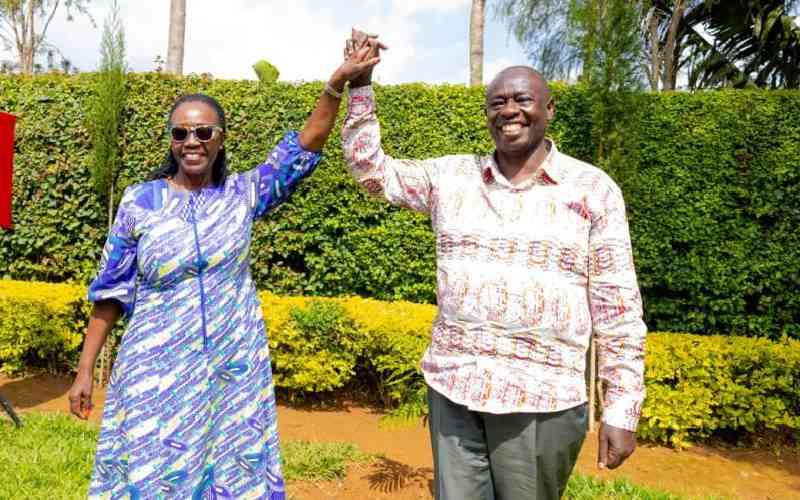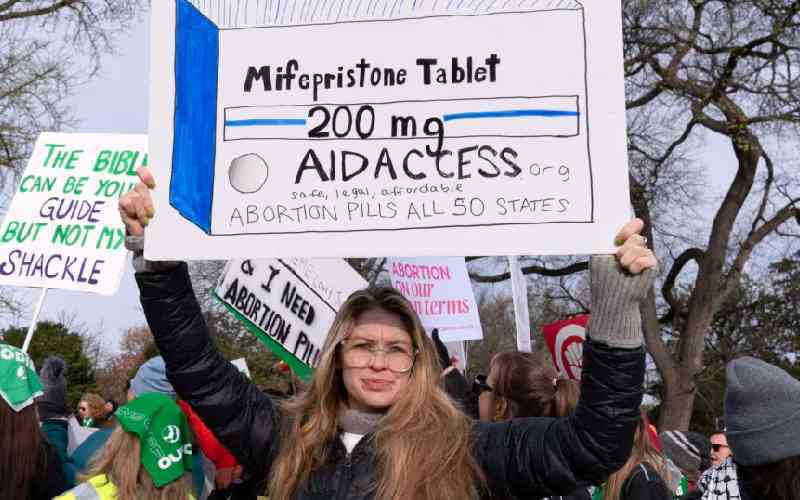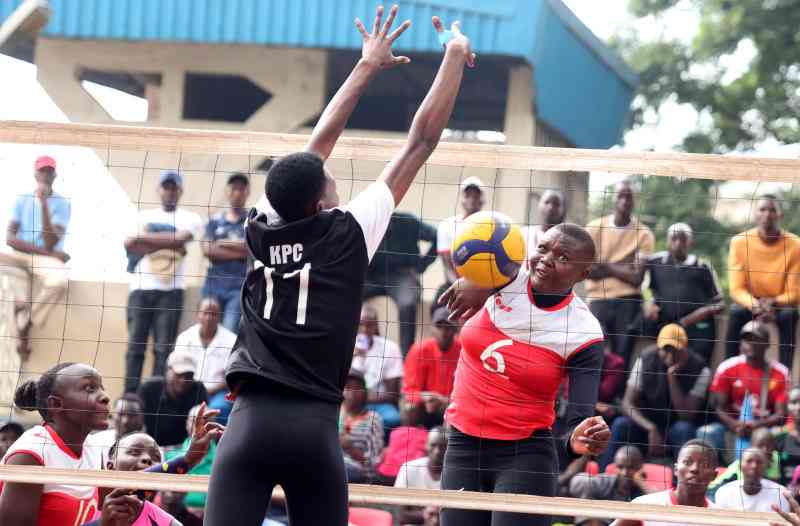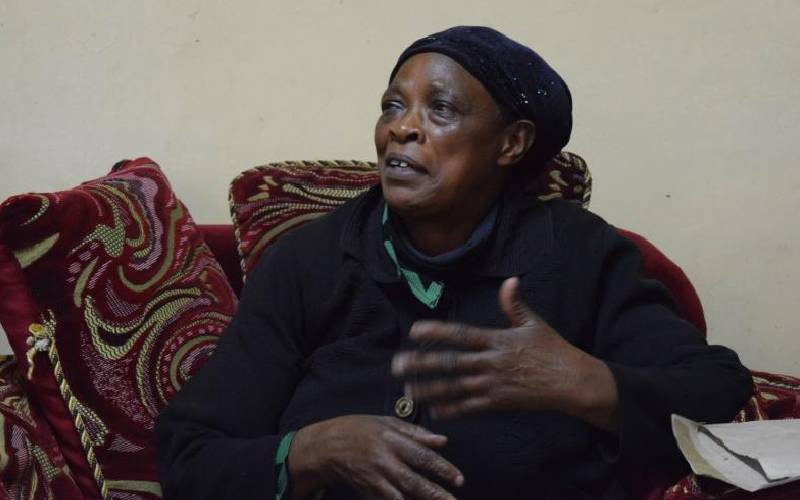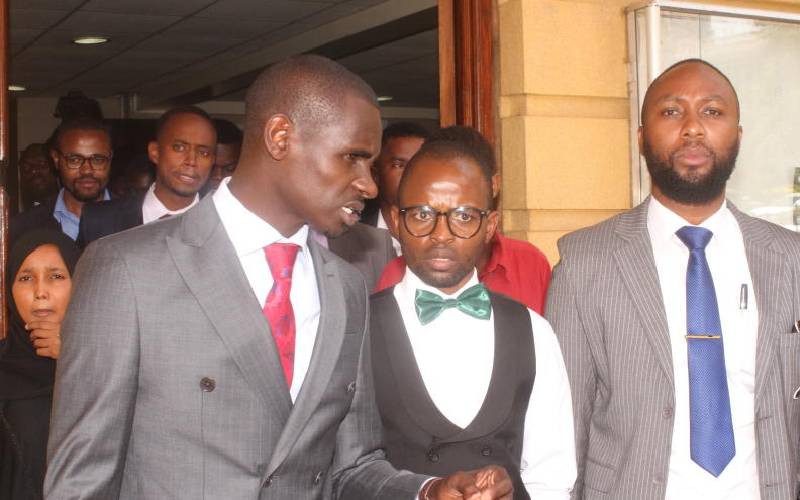By Kiundu Waweru
Nairobi, Kenya: Nineteen-year-old Victoria reenacts how a ‘doctor’ at a clinic in Huruma pumped out blood from her womb using some straw-like plastic. She was 17 then.
“I didn’t even know I was pregnant, until I started falling sick. My mother asked if I was pregnant. I shared with a friend, and she said we need to check out and get rid of it, fast.”
They did. A local ‘doctor’ at the backroom of a two-roomed, plywood partitioned clinic asked her not to scream. The pain was unbearable. Then the bleeding was unstoppable.
After a few months, she was pregnant again. She had learnt the ropes but unlike the first time when she was asked to cough Sh2,000, this second doctor, deemed an expert who works at a reputable hospital but operating a clinic in Madoya, Huruma, asked for Sh5,000.
Other girls in Huruma say some of the people operating the local pharmacies and clinics also work in big hospitals but have found a quick avenue to make money through abortions.
According to Kenyan law and the World Health Organisation (WHO), these doctors or health workers are categorised as quacks. The WHO says that performing an abortion in an environment that does not conform to minimum medical standards is unsafe. It further defines unsafe abortion as a procedure for terminating pregnancy, carried out by persons lacking the necessary skills.
But safety was the last thing in Victoria’s mind. The pregnancy had to go; otherwise her parents would disown her. The doctor gave Victoria some tablets, saying they were painkillers. “Then he asked me to lie on a table then used scissors on me.”
The first time, the pregnancy was three months. The second, she says, she visited the ‘doctor’ at five months, which according to the Ministry of Health should not be the case, as termination of pregnancy in the second trimester should be done in facilities with adequate supportive care like blood transfusion and a theatre.
This is according to a Standards and guidelines handbook for reducing morbidity and mortality from unsafe abortion in Kenya, published by the Ministry of Health last year.
The book like the Constitution says abortions are not permitted unless, in the opinion of a trained health professional, there is need for emergency treatment, or the life or health of the mother is in jeopardy.
But women like Victoria rarely learn from mistakes. After her second abortion, Victorial joined a local high school and settled down for her studies. But soon she met a garbage collector who would smile at her everyday, then started buying her chips and giving her bus fare. After a while, she was “in love”.
She fell pregnant for the third time. She was in Form Four. She went ahead and sat her Kenya Certificate of Secondary Education exams last year while pregnant.
At eight months, she decided get rid of it. She paid Sh6,000 to another ‘doctor’ who told her that it was a small matter. This time, the doctor injected her hand and then used a tool that look like a crochet needle.
“The pain was excruciating. Unlike the previous time when blood came out, a water like substance oozed. After a second injection, I was asked to push, and push. Alas. the baby was alive. It cried once, and then went quiet. I do not know what they did with it.”
Stay informed. Subscribe to our newsletter
That Victoria has sought abortion three times does not shock reproductive health experts like Dr Joachim Osur. As the director of IPAS, an organisation that works towards ending preventable deaths from unsafe abortion, Dr Osur has seen it all.
“Anywhere in the world, whether there are restrictive or liberal abortion rules, when a woman decides to get rid of an unwanted pregnancy, she will. The only difference is the means and where it is done,” says Dr Osur.
The Kenya Demographic and Health Survey 2008-09 says that 43 per cent of Kenyan pregnancies are unwanted.
Last year, the unwanted pregnancies, close to half a million were aborted in Kenya, clandestinely. This is according to a report by the African Population and Health Research Centre in partnership with the Ministry of Health, IPAS and Guttmacher Institute on the incidence and complications of abortion in Kenya.
The survey sampled women who visited hospitals seeking post-abortion care after the clandestine operation backfired.
The report shows that out of 460,000 women who sought post-abortion care last year, 16.5 per cent, like Victoria were aged between 10 and 19. This age group had the most severe complications, at 45 per cent.
“Most women go to the hospital when the complications, like bleeding, have turned severe,” says Dr Osur. The report states that the complications of abortion include high fever, sepsis, shock or organ failure, and death. The study estimates that 266 Kenyan women, out of every 100,000 unsafe abortions die.
Jane, also from Huruma, knows what abortion complications mean. She is 16 and says she is still healing from her post-abortion wounds. Jane says she would be dead were it not for a good Samaritan who paid her hospital bill.
“My employer took me to a hospital in Eastlands after a night of unbearable pain and bleeding following an abortion.” Jane says that she stayed at the hospital for a month without help. “I started to stink. Nurses avoided me.” After the bill was paid, she was examined and told the bad news: She had developed an infection from incomplete abortion. “My uterus had rotten. I will never conceive again,” she says, before breaking down.
Abortion is an emotive issue which divides Kenyans right down the middle, even though the report shows that Kenya leads in the world in the number of abortions carried out annually.
“I have been saying Kenya has turned into an immoral society. Drugs and prostitution have become the order of the day. It can only lead to HIV and sexually transmitted infections as well as unwanted pregnancies,” says Sheikh Hassan Kinyua of the Supreme Council of Kenya Muslims. Kinyua, who is also a lecturer of religious studies at the University of Nairobi says even though Islam allows contraception use in marriage, he is deemed controversial for advocating condom use in youths.
“For a Muslim unmarried girl getting pregnant, there is 90 per cent chance she will abort. We should apply the philosophy of the lesser evil. To avoid killing the unborn foetus, why not use protection?”
What is shocking is that most women, more than 70 per cent, were not using a method of contraception. Victoria said she had never heard of contraceptives. When she fell pregnant, her mother asked her to abstain because using contraceptives would make her disabled, or unable to ever conceive. There are many more myths on family planning that has contributed to low intake.
The director of Medical Services, Dr Francis Kimani, acknowledges the low uptake and says improving women’s access to affordable and effective contraception is key to preventing unintended pregnancies and unsafe abortions.
“Effective family planning or contraception would also save our country the huge material and other resources that currently go into the treatment of unsafe abortion,” says Dr Kimani.
 The Standard Group Plc is a
multi-media organization with investments in media platforms spanning newspaper
print operations, television, radio broadcasting, digital and online services. The
Standard Group is recognized as a leading multi-media house in Kenya with a key
influence in matters of national and international interest.
The Standard Group Plc is a
multi-media organization with investments in media platforms spanning newspaper
print operations, television, radio broadcasting, digital and online services. The
Standard Group is recognized as a leading multi-media house in Kenya with a key
influence in matters of national and international interest.
 The Standard Group Plc is a
multi-media organization with investments in media platforms spanning newspaper
print operations, television, radio broadcasting, digital and online services. The
Standard Group is recognized as a leading multi-media house in Kenya with a key
influence in matters of national and international interest.
The Standard Group Plc is a
multi-media organization with investments in media platforms spanning newspaper
print operations, television, radio broadcasting, digital and online services. The
Standard Group is recognized as a leading multi-media house in Kenya with a key
influence in matters of national and international interest.



